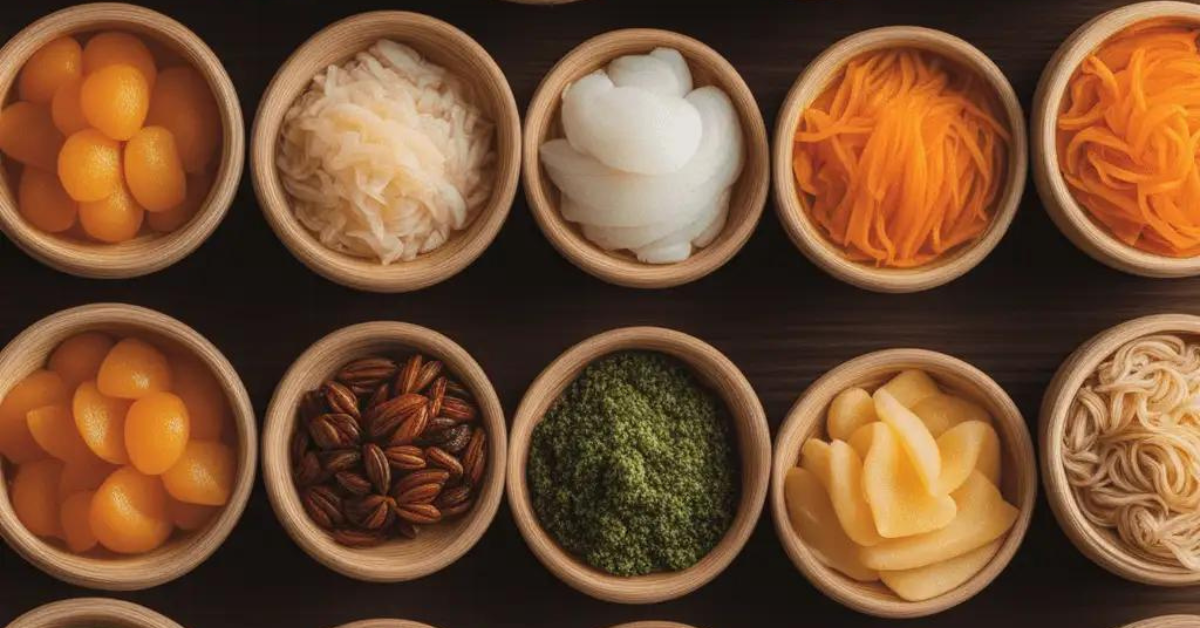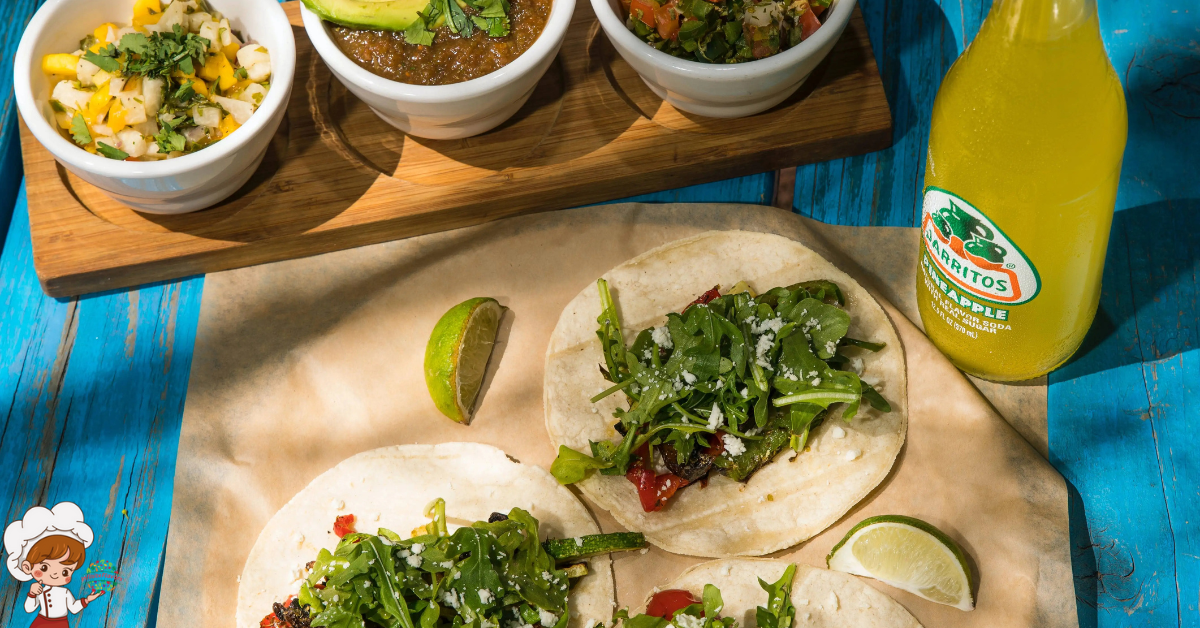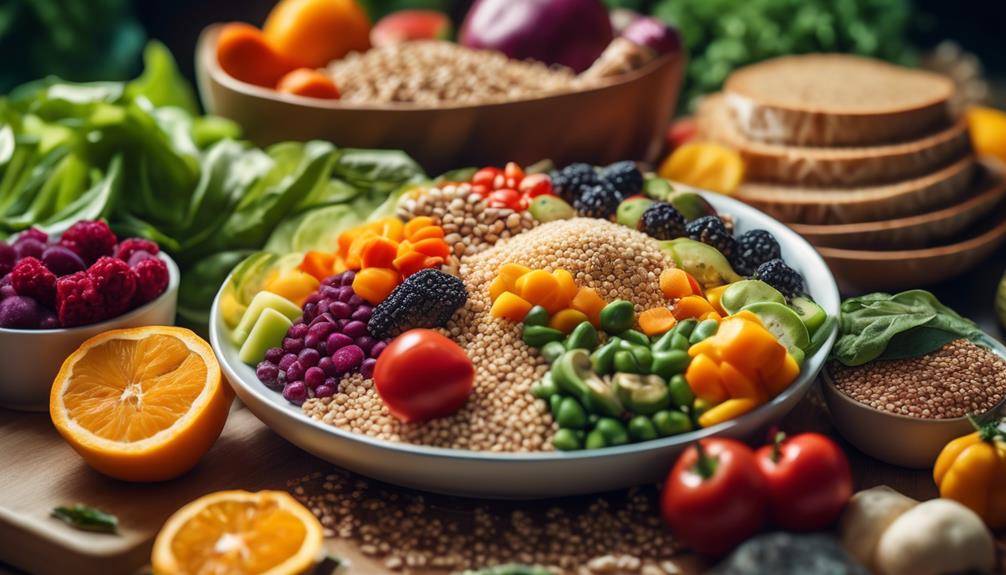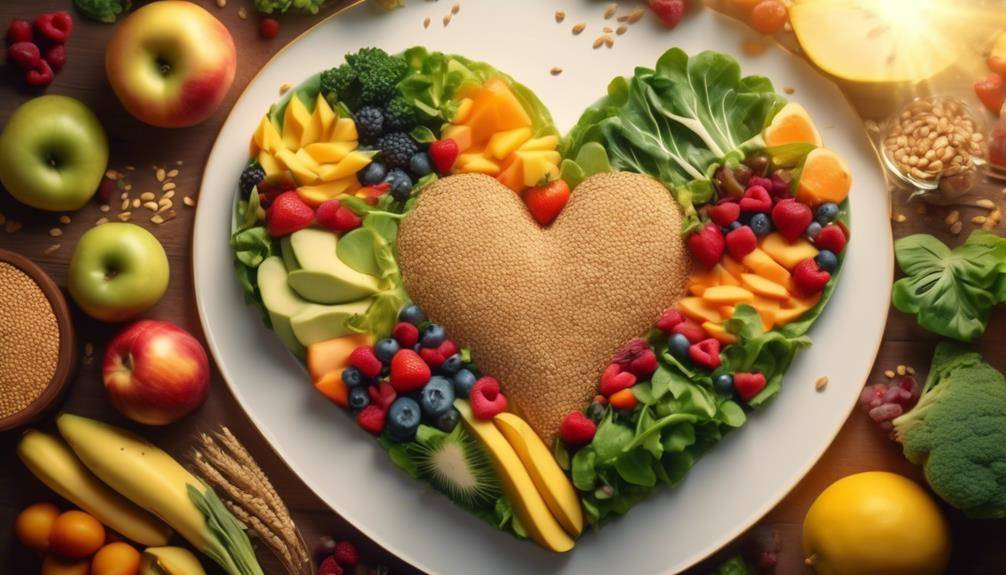The Most Common Mistakes In Flambéing

The Most Common Mistakes In Flambéing; When flambéing, you might encounter several common mistakes that can ruin your dish or create safety hazards. Using low-proof or low-quality alcohol can prevent proper ignition and affect the flavor. Ignoring safety precautions, like not having a fire extinguisher nearby, is risky. Skipping preparation steps leads to chaos, and overloading ingredients disrupts harmonious flavors. Poor flame control and cooking on unstable surfaces can result in accidents. Always monitor the flame closely to avoid flare-ups. By refining your technique and understanding these pitfalls, you’ll create stunning flambé dishes with confidence. There’s much more to mastering this technique.
Using the Wrong Alcohol
When it comes to flambéing, choosing the right alcohol is essential for achieving that perfect ignite. Your alcohol selection can make or break the flambé experience, as not all alcohol types are created equal. Ideally, you want something with a higher proof, typically 80 to 100 proof, which ignites easily and burns steadily.
Common choices include brandy, rum, and certain liqueurs, each contributing unique flavors to your dish. For instance, brandy adds a rich, fruity note, while rum brings a sweet, tropical essence. However, steer clear of low-proof alcohols, like beer or wine, as they won’t ignite properly, leaving you with a lackluster result.
Additionally, some flavored liqueurs, though tempting, may contain additives that can affect the flame. You don’t want to risk a disappointing flambé just because you chose an alcohol type that isn’t suited for the task. Always avoid using non-edible alcohol, like rubbing alcohol, as it’s dangerous and toxic.
When planning your flambé, consider the dish’s flavors and how the chosen alcohol complements them. This way, you’ll not only achieve that impressive flame but also enhance the overall taste of your meal. Remember, the right alcohol selection elevates your flambéing game, transforming an ordinary dish into a culinary spectacle. So, gather your ingredients, pick the perfect alcohol, and prepare for a show-stopping experience!
Ignoring Safety Precautions
Choosing the right alcohol is just the beginning; safety precautions play an essential role in the flambéing process. You might be excited to impress with a dramatic fire display, but ignoring flame safety can lead to accidents that ruin your culinary experience. Always prioritize safety by keeping a few key principles in mind.
First, make certain you’ve got a fire extinguisher nearby and know how to use it. In case things get out of control, being prepared can save you and your kitchen. Next, wear appropriate clothing—avoid loose sleeves and flammable materials. They can easily catch fire if you’re not careful.
When flambéing, keep all flammable items away from your cooking area. This includes paper towels, dishcloths, and anything else that could ignite. Cooking awareness is vital; stay focused and avoid distractions while you’re working with an open flame.
Additionally, consider the ventilation in your kitchen. Flames can produce smoke, so it’s wise to have a window open or a fan running. If you’re in a cramped space, the risk heightens.
Lastly, never pour alcohol directly from the bottle into a hot pan. The flames can travel back into the bottle, creating a dangerous situation. Instead, pour a measured amount into a separate container first. By following these safety precautions, you’ll not only enhance your flambéing skills but also guarantee a safer cooking experience. Remember, a little caution goes a long way in the kitchen!
Skipping Preparation Steps
Skipping preparation steps can lead to disaster when flambéing. You might think that the excitement of igniting your dish is enough to skip ahead, but proper preparation is essential. Start with ingredient selection; choosing the right ingredients can make or break your flambé experience. Fresh, high-quality items not only enhance flavor but also burn more predictably, which is critical for successful flambéing.
Next, focus on technique refinement. Familiarize yourself with the method before you even think about lighting that flame. Make certain you understand the appropriate alcohol to use, as different spirits have varying alcohol contents and ignition points. Using a higher-proof alcohol can create a more dramatic flame, but it also requires careful handling.
Prepare your cooking space by having all your tools and ingredients organized. This means measuring out your liquids and chopping any necessary components ahead of time. When you’re ready to flambé, there shouldn’t be any last-minute scrambling for ingredients or tools. You need to concentrate on the process to guarantee your dish turns out perfectly.
Overloading Ingredients
When you overload ingredients in a flambé, you risk throwing off the balance of flavor profiles. This not only affects the taste but can also complicate your technique, making it harder to achieve that perfect flame. Keeping your ingredient amounts in check is key to a successful flambé experience.
Balance Flavor Profiles
Balancing flavor profiles is essential in flambéing, as overloading ingredients can easily mask the dish’s intended taste. When you flambé, you want the ingredients to shine while enhancing each other’s flavors rather than competing for attention. Start by selecting a few key ingredients that complement each other. Think about how sweet, spicy, and savory elements can create ingredient harmony.
Avoid the temptation to throw in every flavor you think might work. Too many ingredients can disrupt flavor balance, leading to a muddled dish. Instead, focus on a few standout flavors that will elevate the dish. For instance, if you’re using brandy to flambé, consider pairing it with fruits like peaches or apricots, which will beautifully highlight the sweetness.
Taste as you go, adjusting the seasoning and ingredients based on what you want to achieve. This way, you guarantee that each bite offers a cohesive experience. Remember, less is often more in flambéing. By keeping your ingredient list simple and intentional, you’ll achieve a successful flambé that showcases the true essence of your dish.
Impact on Technique
Overloading ingredients can greatly impact your flambé technique, leading to inconsistent results and diminished flavor clarity. When you pile on too many components, the resulting dish can become muddled, masking the unique flavors you want to highlight. This overload often makes it challenging to achieve proper evaporation of alcohol, which is vital for a successful flambé.
To refine your technique, focus on balancing the amount of ingredients. Use just enough to enhance the dish while allowing the flambé process to shine. A well-executed flambé should highlight the dish’s essence, not overshadow it with excessive components. When you prioritize simplicity, you create better opportunities for flavor enhancement, making the overall experience more enjoyable.
Poor Flame Control
When you’re flambéing, poor flame control can lead to dangerous situations. Ignoring wind conditions can cause flames to flare unpredictably, while inadequate fuel management might result in a weak or uneven burn. It’s essential to stay aware of these factors to guarantee a safe and successful flambé.
Ignoring Wind Conditions
Ignoring wind conditions can lead to disastrous results when flambéing, as even a slight breeze can disrupt your flame control. When you’re cooking outdoors or in a well-ventilated area, you need to be aware of the wind direction. A gust can easily blow your flames off course, creating an unpredictable fire that can ruin your dish or even cause safety hazards.
To maintain flame stability, you should always position your flambé pan away from the wind. If you’re not paying attention, the flames may not only burn unevenly, but they could also extinguish too quickly, leaving you with a lackluster result. So, take a moment to assess the environment before igniting that alcohol.
Additionally, consider using windbreaks, like tall cooking screens or even your body, to shield the flames from the gusts. If you find that the wind is too strong, it might be best to wait for calmer conditions to avoid potential mishaps. Remember, controlling the flame is essential for achieving that perfect flambé, and ignoring wind conditions is one of the most common mistakes you can make.
Inadequate Fuel Management
Proper fuel management is vital for achieving a successful flambé. If you don’t pay attention to the fuel types you’re using, you can end up with poor flame control. Different fuels have varying flame intensities, which can greatly affect your dish. For instance, using high-proof alcohol will produce a more robust flame, while lower-proof options might not ignite as effectively.
When you’re flambéing, it’s important to measure the amount of fuel you pour into the pan. Too much fuel can create an uncontrollable blaze, while too little might not ignite properly. Always remember that flame intensity can be influenced by how you introduce the fuel to the heat. Pouring it in slowly and steadily can help maintain a steady flame.
Additionally, keep an eye on the cooking temperature. If it’s too low, the fuel may not ignite at all. If it’s too high, you risk burning your dish or creating an excessive flame. By managing your fuel types and flame intensity properly, you’ll guarantee a spectacular flambé that enhances your meal rather than ruining it. So, take control of your fuel management, and you’ll achieve the desired results every time.
Inadequate Ventilation
Inadequate ventilation is one of the most significant mistakes you can make while flambéing. When you’re igniting alcohol in your dish, the flames can produce smoke and fumes. Without proper air circulation, these can linger and create a hazardous environment. You might not realize it, but the buildup of smoke can obscure your view and make it difficult to control the flames.
To avoid this, implement effective ventilation techniques in your kitchen. Open windows or turn on exhaust fans to guarantee fresh air flows through the space. If you’re working in a confined area, consider using a portable fan to enhance air circulation. This not only helps maintain safety but also allows you to monitor the flambéing process more easily.
Timing the Flambé Incorrectly
Getting the timing right when flambéing is essential to achieving that perfect burst of flavor and excitement. You need to preheat your ingredients properly and consider your fuel source, as these factors can make or break your dish. Plus, avoid overcooking beforehand to guarantee the flambé enhances rather than overwhelms your meal.
Preheat Your Ingredients
Often overlooked, preheating your ingredients is essential for a successful flambé. When you don’t pay attention to ingredient temperature, you risk ending up with a lackluster dish. Preheating allows the flavors to activate properly, ensuring that they shine through once you ignite the alcohol.
Before you start flambéing, make sure your ingredients are warmed up to an ideal temperature. Cold ingredients can cause the alcohol to cool down too quickly, preventing it from igniting effectively. Warm ingredients allow the flames to catch and burn brightly, enhancing both the presentation and flavor of your dish.
Fuel Source Considerations
While timing your flambé might seem straightforward, misjudging when to ignite the alcohol can lead to disastrous results. You’ll want to choose your moment carefully, as igniting too early can burn off valuable flavors, while waiting too long might cause your dish to cool down. Proper timing is essential for flavor enhancement, as the flames not only create a dramatic presentation but also help integrate the alcohol’s essence into your dish.
When considering ingredient selection, think about the types of alcohol you’re using. Spirits with higher alcohol content, like brandy or rum, ignite more easily and burn hotter, which can enhance the flavors more effectively. If you use a lower-proof alcohol, it may not create the desired flambé effect or may require more careful timing to achieve that perfect moment of ignition.
Avoid Overcooking Beforehand
Timing the flambé doesn’t just hinge on when you ignite the alcohol; it also depends on how well your dish is cooked beforehand. Overcooking your ingredients can ruin the flambé experience. If your dish is already dry or mushy, the flambé won’t add the intended depth of flavor. Instead, it’ll just mask the dish’s original essence.
To get it right, focus on proper ingredient selection. Choose ingredients that complement each other and allow for a perfect balance in flavor pairing. For instance, using a juicy meat or fresh vegetables guarantees that when you flambé, you enhance the dish rather than detract from it.
Before you set that alcohol ablaze, make certain your dish is cooked to a point where it’s still vibrant and flavorful but not overdone. This way, when you ignite the alcohol, you create a beautiful flame that lifts the dish’s flavors, rather than overwhelming them. Keep an eye on the cooking times, and remember: the flambé should be the finishing touch, not a desperate attempt to salvage a dish gone wrong.
Not Heating Alcohol Properly
When you’re flambéing, not heating the alcohol properly can lead to disappointing results. If the alcohol’s too cold, it won’t ignite, leaving your dish without that exciting flair. On the flip side, if you overheat it, you risk burning off the alcohol’s unique flavors, which defeats the purpose of using proper alcohol in the first place.
To master flambé techniques, you need to warm the alcohol gently in a separate pan before adding it to your dish. Aim for a temperature that’s warm but not boiling—around 130 to 150°F. This helps the alcohol vaporize effectively, creating that beautiful flame you want. You can test it by gently swirling the alcohol; if it feels warm to the touch and gives off a slight aroma, you’re on the right track.
When you pour the warmed alcohol into your dish, do it carefully and verify the pan’s surface is hot enough to catch the vapor. If you’ve heated it correctly, the flames should dance and enhance the overall presentation. Remember, flambéing isn’t just about the fire; it’s about elevating flavors, too.
Using Low-Quality Alcohol
Using low-quality alcohol can seriously compromise your flambéing experience, as it often lacks the robust flavors that enhance your dish. When you choose subpar alcohol, you not only risk ruining the taste but also diminish the overall presentation. High alcohol quality brings out the best in your ingredients, creating a symphony of flavors that captivates your guests.
Flambéing is about more than just creating a dramatic flame; it’s also about flavor enhancement. The right alcohol can add depth and complexity to your dish, complementing the other components beautifully. Think about how a premium brandy or rum can transform a simple dessert into a gourmet experience. On the flip side, low-quality spirits can impart unpleasant aftertastes or create an unbalanced flavor profile.
When you’re ready to flambé, invest in good-quality alcohol. Look for options that are specifically designed for cooking or have a reputation for quality. You don’t have to spend a fortune, but skimping on alcohol can lead to a lackluster result. Remember, the goal is to elevate the dish, not detract from it.
Failing to Monitor Flame
A flickering flame can easily turn into a dangerous blaze if you don’t keep a close eye on it while flambéing. Monitoring the flame intensity is vital to guarantee safety in the kitchen. If the flame gets too high, it can not only scorch your food but also pose a serious fire hazard. You should always adjust your technique and distance from the flame based on how it behaves.
Watch the flame color as well; a bright blue flame indicates proper combustion, while a yellow or orange flame suggests incomplete burning. This change can affect the flavor of your dish and may signal that something’s amiss. If the flame color shifts, it’s time to take action—either by reducing the heat or altering your flambéing technique.
Don’t get distracted! It’s easy to lose focus, especially when you’re trying to impress your guests. If you step away for even a moment, you risk letting the situation escalate. Keep your utensils and ingredients close, so you can respond quickly if things go awry.
Also, consider using a timer or setting reminders to periodically check the flame. This simple practice can prevent mishaps that might otherwise ruin your culinary masterpiece. In flambéing, vigilance is key; never underestimate the power of a flame. By paying attention to both flame intensity and color, you can enjoy the dramatic flair of flambéing while keeping your kitchen safe.
Cooking on Unstable Surfaces
Cooking on unstable surfaces can complicate your flambéing efforts even further. When you’re trying to create that impressive burst of flame, having a solid, stable surface is essential. If your stove or countertop wobbles, it can lead to spills, splashes, and even accidents. You don’t want to risk igniting something unintentionally because your pan tipped over or slid off the edge.
To guarantee surface stability, always check that your cooking area is level. If you’re using a portable burner or a camping stove, set it up on a flat, sturdy surface. Avoid working on uneven countertops or tables that can shift under the weight of your pot or pan.
Kitchen safety should always be your top priority. Flambéing requires you to handle flames and hot liquids, both of which can pose serious hazards if you’re not careful. An unstable surface increases the risk of injury, so take a moment to assess your surroundings before you start. Make sure nothing is cluttering your workspace that could easily catch fire or cause you to trip.
In short, for successful flambéing, prioritize cooking on stable surfaces. This simple step will not only improve your technique but also keep your kitchen safe from potential disasters. With a solid base, you can focus on perfecting your flambé technique and impressing your guests with your culinary skills.
Not Having a Fire Extinguisher
When you’re flambéing, not having a fire extinguisher nearby can turn an exciting cooking moment into a dangerous situation in seconds. Flambéing involves igniting alcohol to enhance flavors, which can create impressive flames. However, if things go wrong, those flames can escalate quickly. That’s why prioritizing fire safety is vital during kitchen preparation.
Before you begin flambéing, make certain you have a fire extinguisher within arm’s reach. A kitchen is no place for complacency; you can’t assume that you won’t need it. Even experienced cooks can find themselves in unexpected situations. A sudden flare-up or an accidental spill can ignite nearby ingredients or even your clothing.
Choose a fire extinguisher rated for class K fires, which are specifically designed to handle grease and oil fires common in kitchens. Ascertain it’s easily accessible and that any cooking assistants know where it is located. Taking this simple precaution can save lives and property.
In addition to keeping a fire extinguisher handy, familiarize yourself with how to use it. In a panic, you might forget the steps. Practice using it, so you’re prepared if a fire breaks out. Remember, your safety and the safety of others in the kitchen come first.
In short, don’t overlook the importance of fire safety when flambéing. Having a fire extinguisher at the ready is a small step that can make a big difference in guaranteeing a safe and enjoyable cooking experience.
Frequently Asked Questions: The Most Common Mistakes In Flambéing
Can I Flambé With Non-Alcoholic Spirits?
Yes, you can flambé with non-alcoholic spirits, but results may vary. Use flavor alternatives like non-alcoholic rum or whiskey to enhance your dish while still achieving that dramatic flair without the alcohol. Enjoy experimenting!
What Types of Dishes Are Best for Flambéing?
You’ll find that dishes like fruits, meats, and desserts work best for flambéing. Mastering flambé techniques enhances flavors, but always prioritize flambé safety to prevent accidents and guarantee a delightful cooking experience.
How Do I Safely Extinguish a Flambé?
To safely extinguish a flambé, you can cover the pan with a lid or use a fire extinguisher. Always prioritize fire safety by keeping flammable materials away and having a plan in case of emergencies.
Is Flambéing Suitable for Outdoor Cooking?
Flambéing outdoors can be thrilling, but you need to prioritize outdoor safety. Guarantee proper flame control and maintain a safe distance from flammable materials. Always have a fire extinguisher nearby for emergencies. Enjoy the experience responsibly!
Can Flambéing Enhance Flavor in All Recipes?
Flambéing can enhance flavor in many recipes, but it isn’t suitable for all. By using flambé techniques, you ignite alcohol to release complex flavors, elevating dishes like desserts or certain meats with a unique depth.
Conclusion
To sum it up, avoiding these common flambéing mistakes can make all the difference in your cooking experience. Always choose the right alcohol and prioritize safety while preparing your dish. Keep an eye on your flame and guarantee your cooking surface is stable. Remember, quality matters, so don’t skimp on ingredients. With these tips in mind, you’ll not only impress your guests but also enjoy the art of flambéing without unnecessary mishaps. Happy cooking!








